Signalling odds & ends
This page has been created to find a home for signalling photos that I can't seem to figure out where to put.
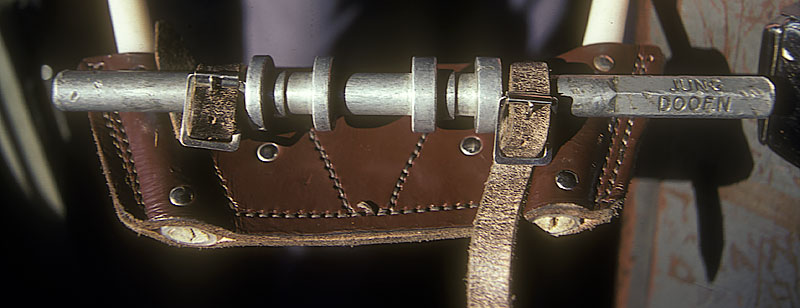
Jung - Dooen electric staff.
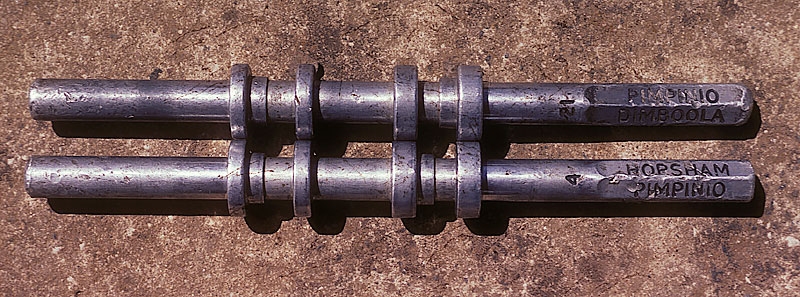
The Horsham - Pimpinio and Pimpinio Dimboola staffs, both staffs had been withdrawn from the instruments in preparation
for switching out Pimpinio, 1982. The different patterns of staff can be seen by the different arrangement of the rings.
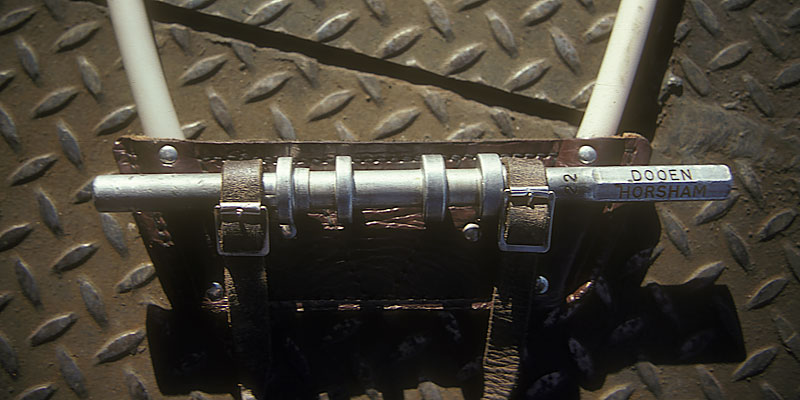
Dooen - Hosham miniature electric staff.
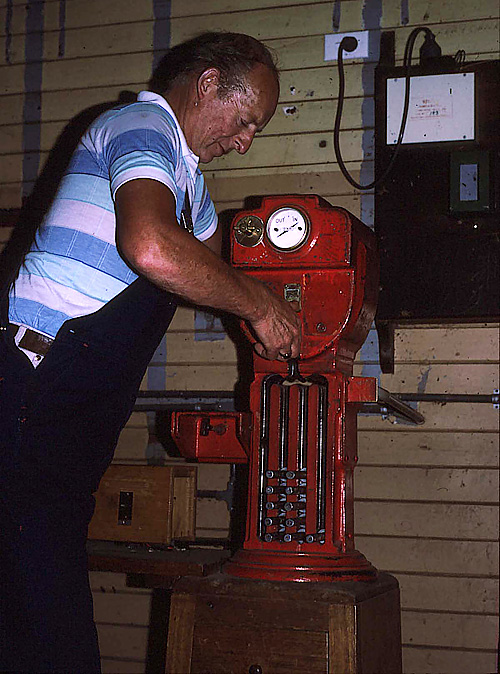
Ararat driver Barry Harris pulls a staff out of the instrument at an unknown station on the
Maroona - Gheringhap line which was worked by a variation of standard electric staff known
"Automatic
Electric staff" which was very similar to standard electric staff except that no
signlaman were involved and the staff working was carried out by the driver. PHOTO courtesy Chris Wurr.
Train Staffs.
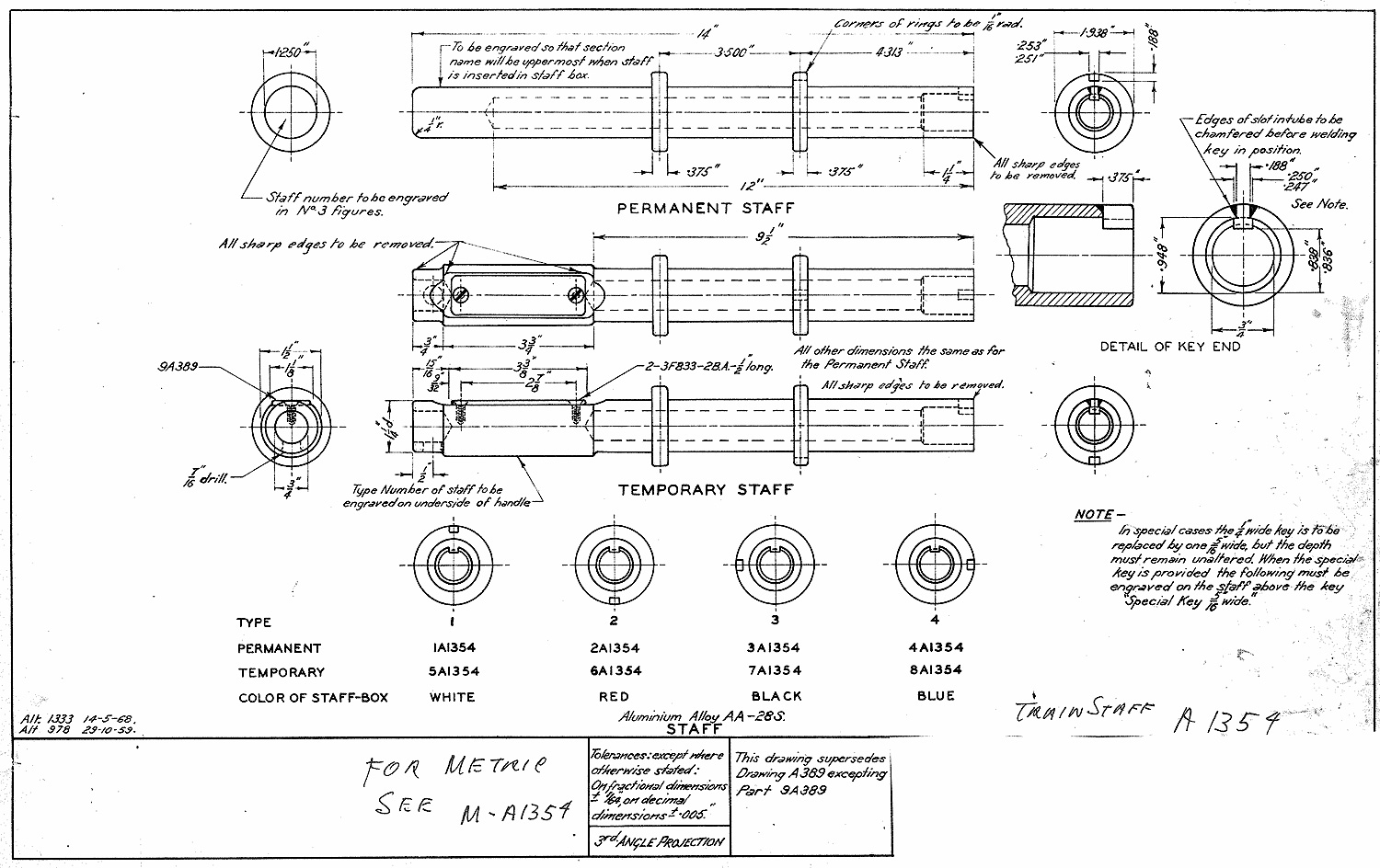
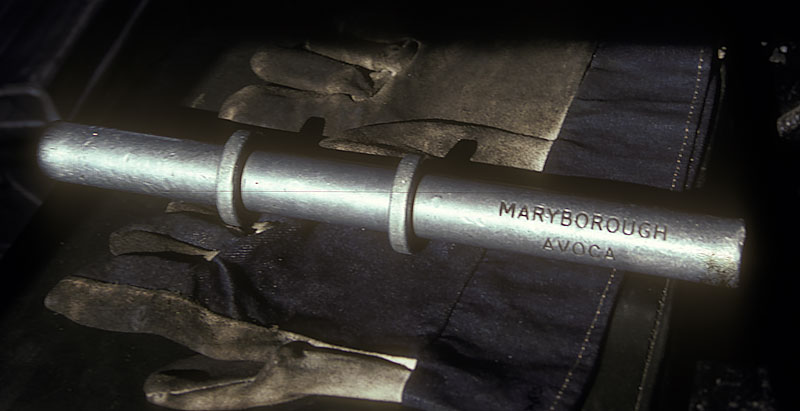
When I was at Ararat, Avoca was still a staff station as shown above, a little while later Avoca was disestablished as a staff station
and the whole section from Ararat to Maryborough was worked by a single staff: PHOTO BELOW courtesy Chris Wurr.
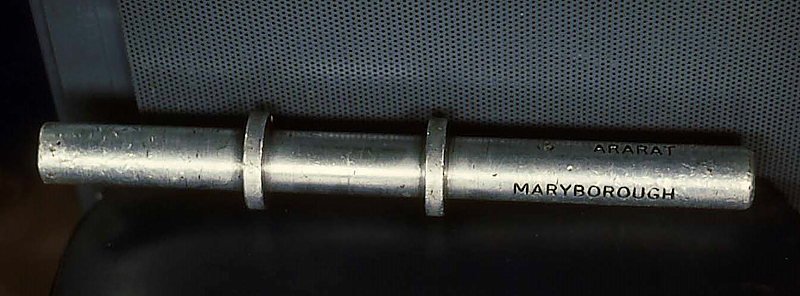
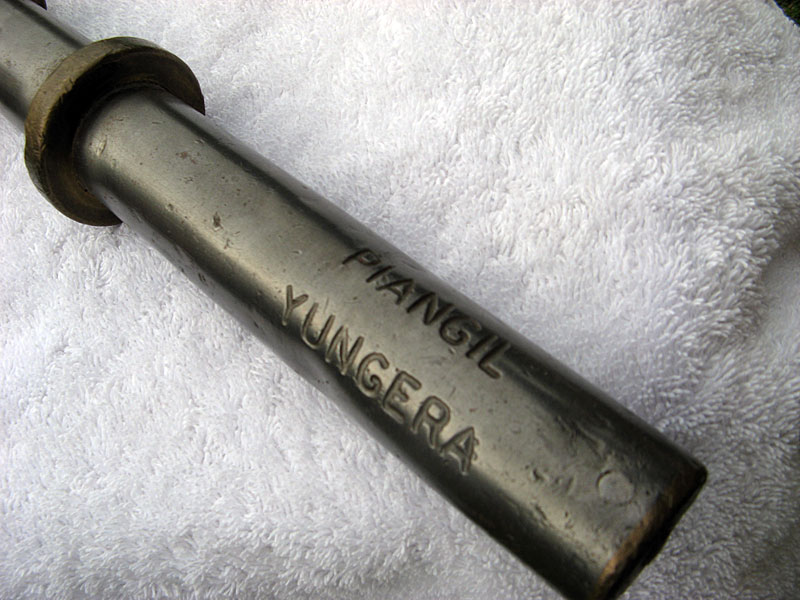
Piangil - Yungera train staff.

The LuEbeck - Rupanyup and Rupanyup - Bolangam train staffs. Note the misspelling of Lubeck.
The bottom staff was known as a temporary staff as its nameplate could be changed.
Photo courtesy Dave Harvey.
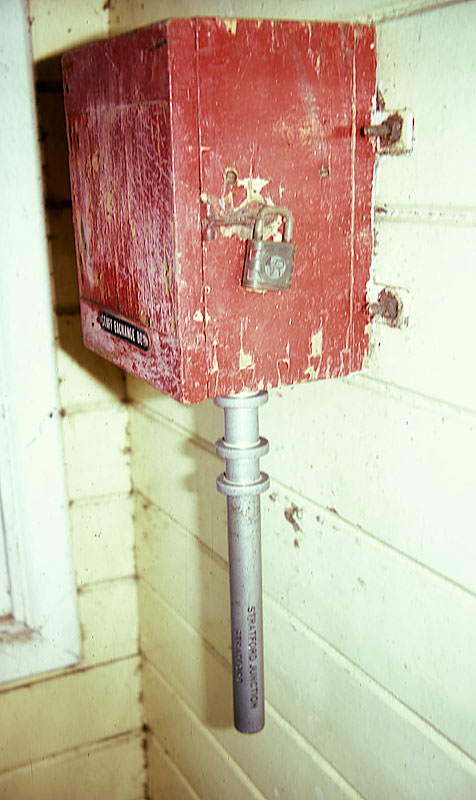
The Stratford Junction to Stratford large electric staff in the staff exchange box at
Stratford Junction. The staff exchange box enabled a train to travel through the section
with Stratford Junction unattended.
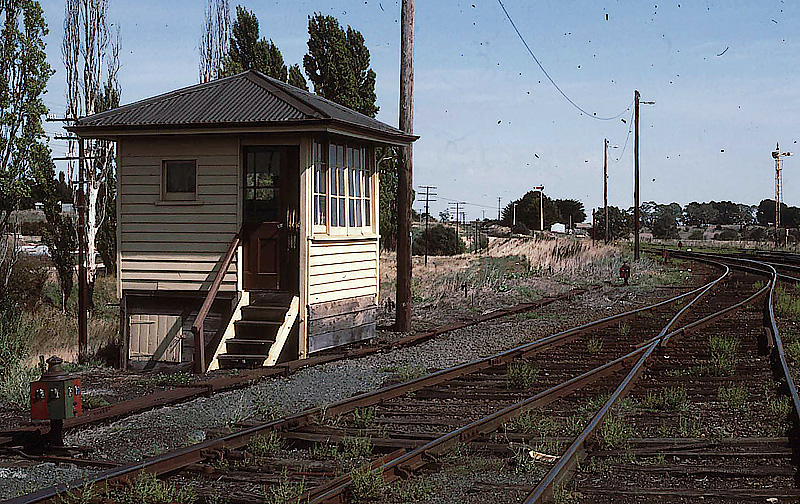
Kyneton auxiliary frame, 1982. Even though Kyneton had a signalbox the down end of the yard was too far away to be controlled from the main box so this frame was provided which only needed to be manned when shunting operations were being undertaken.
BELOW: Closeup of the very rare direct tappett frame in the Kyneton auxiliary frame. BOTH PHOTOS courtesy Chris Wurr.
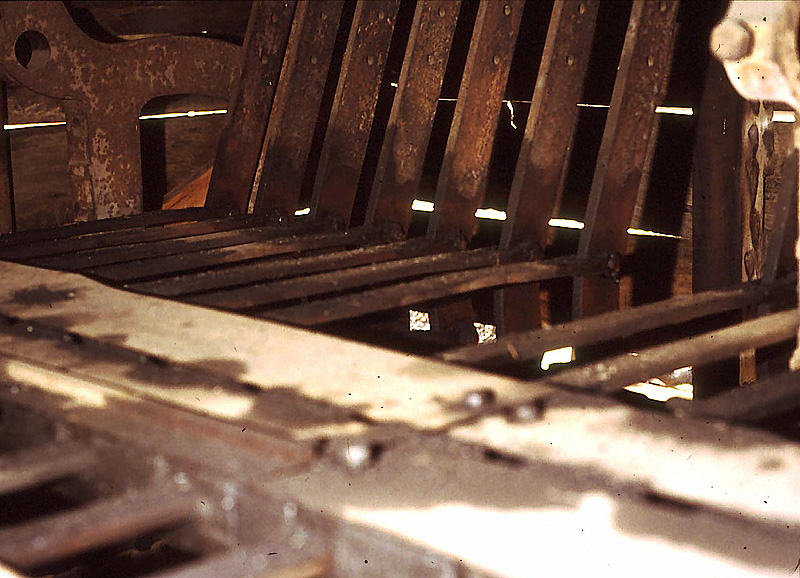
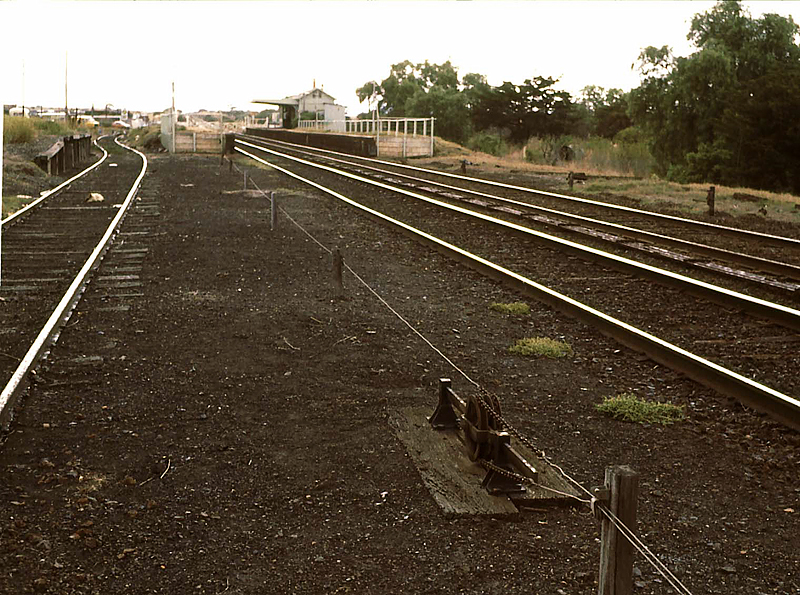
This photo at Sydenham shows a fairly rare device called a Mechanical Selector. It used one signal lever and wire to operate
two different signals depending on the position of the points. In this case lever 6 at Sydenham worked disc 6 or disc 7.
See Sydenham signal diagram . Photo courtesy Chris Wurr.
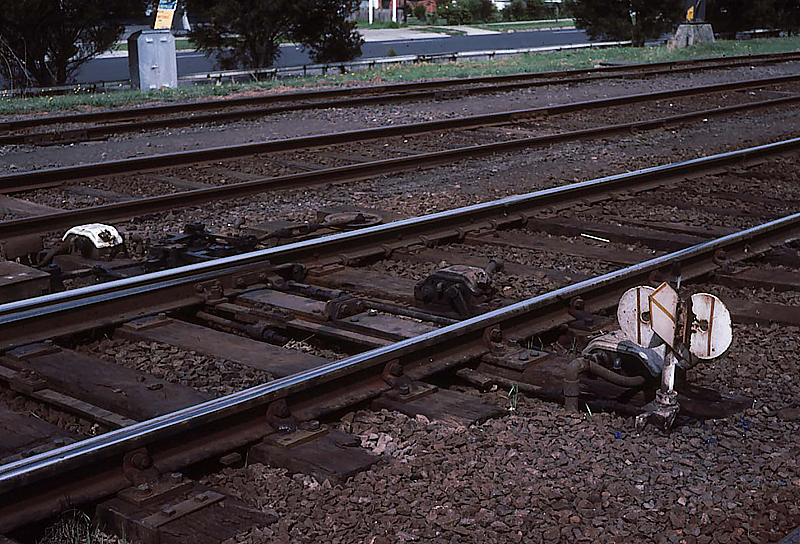
American style swichstands, whilst very common over the border in South Australia, were quite rare in Victoria. To the best of my
knowledge our switchstands were only used in conjunction with double wire pull control of points and signals. This switchstand was
the only example of a dwarf switchstand on the VR.
BELOW: Double wire control of a turnout.
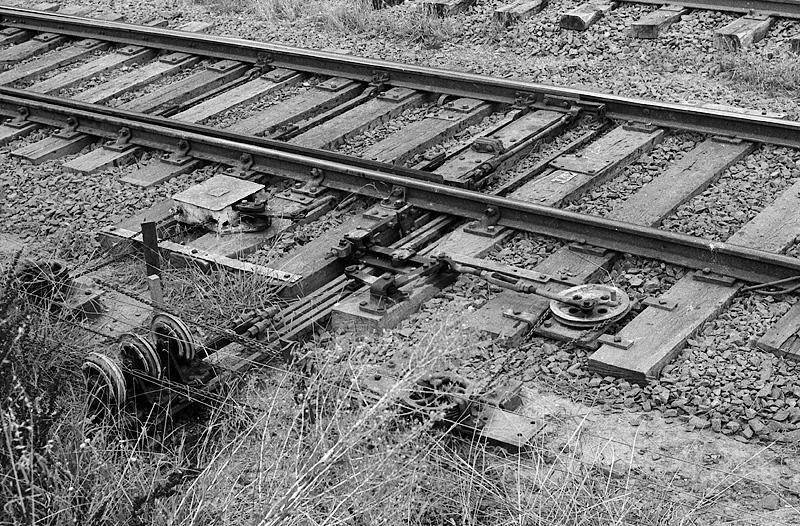
Point Levers
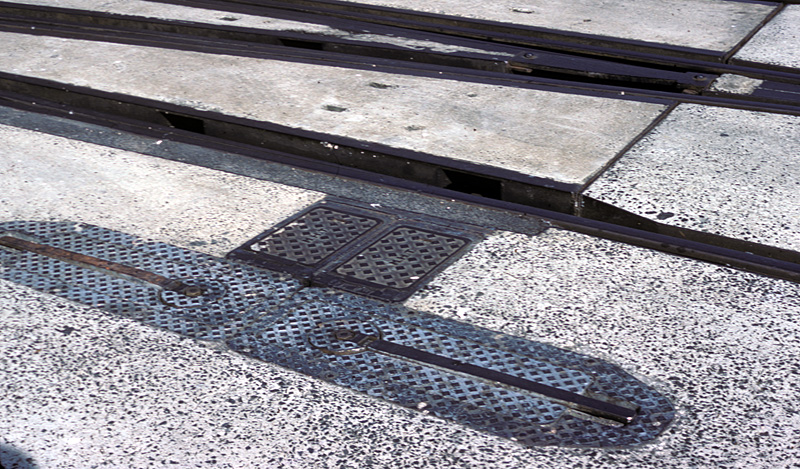
PIER LEVER: This type of lever was used when the tracks were layed in a roadway and there could be nothing protruding above
the roadway
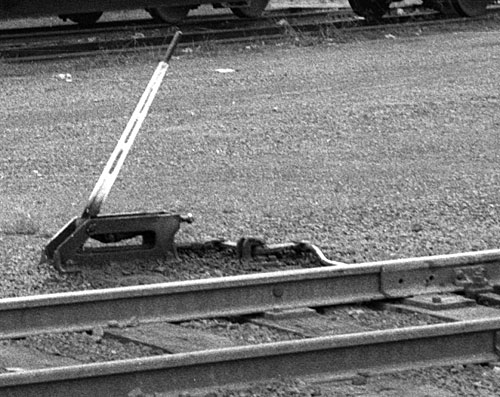
WSa point lever.
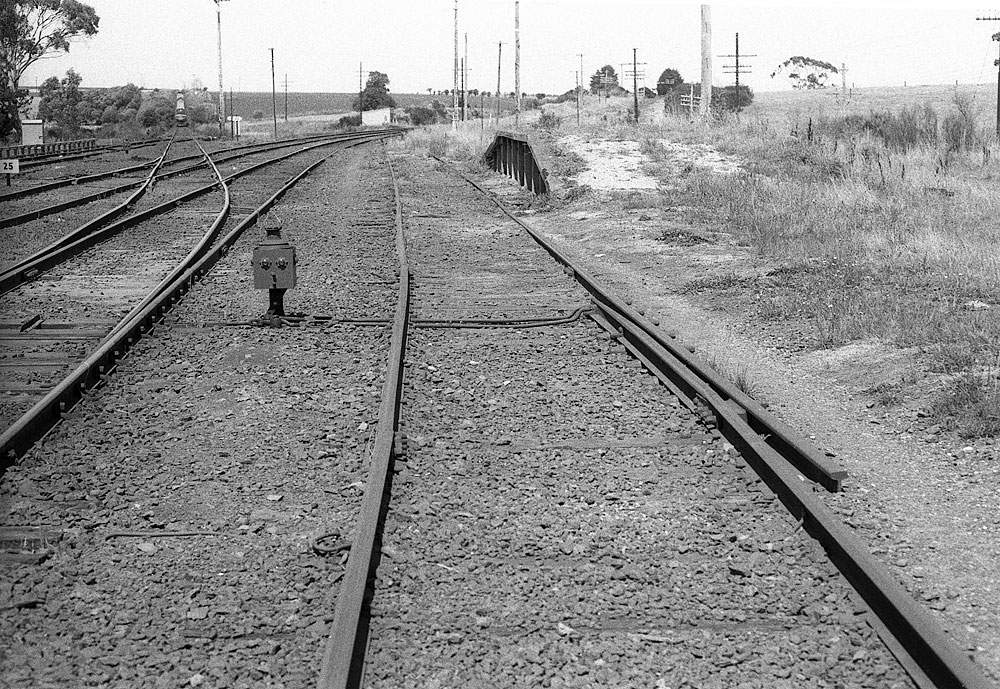
ABOVE: Catch points protected running lines by derailing a vehicle that might roll out of a siding
BELOW: Another way to purposefully derail a vehicle was with a "Scotchblock"
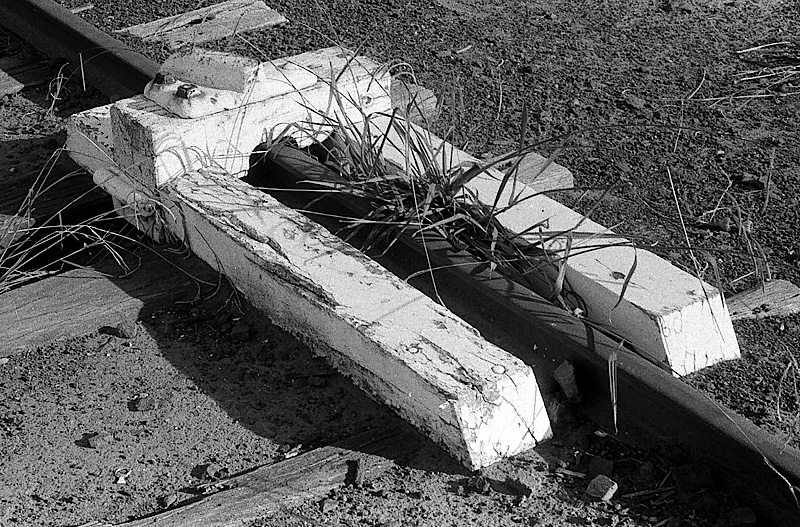
Signalmen at work
ABOVE: A signalman taps out code on a large electric staff instrument
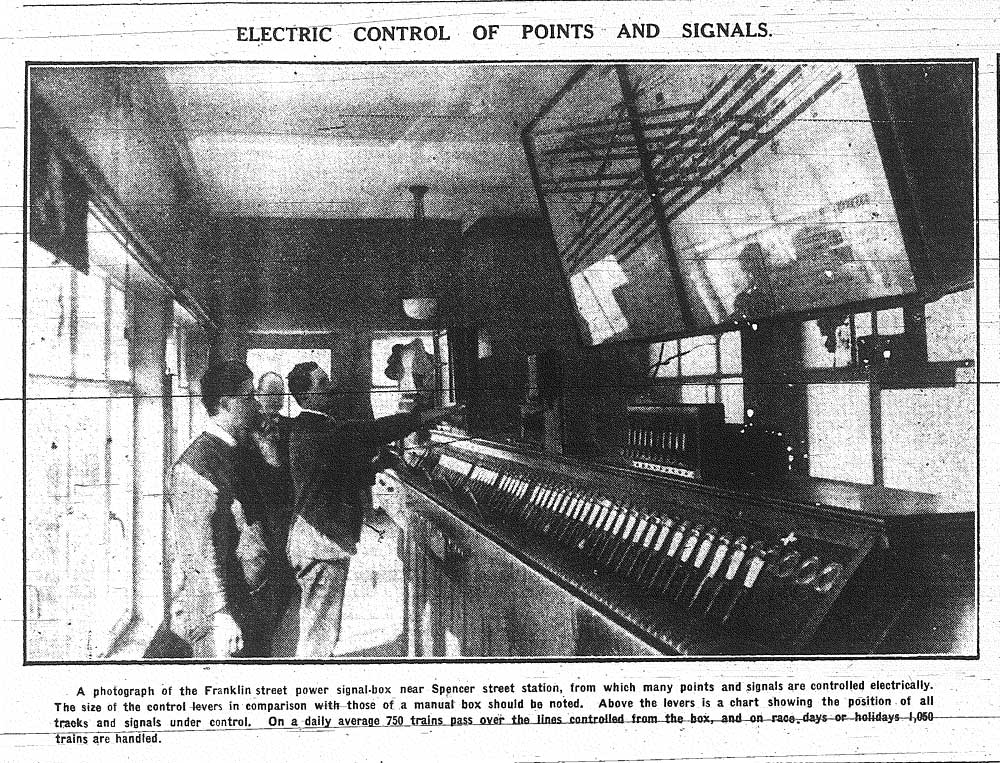 ABOVE: Article from The Argus July 2 1926showing the latest in signalling technology ,the miniature lever frame at Franklin Street
ABOVE: Article from The Argus July 2 1926showing the latest in signalling technology ,the miniature lever frame at Franklin Street
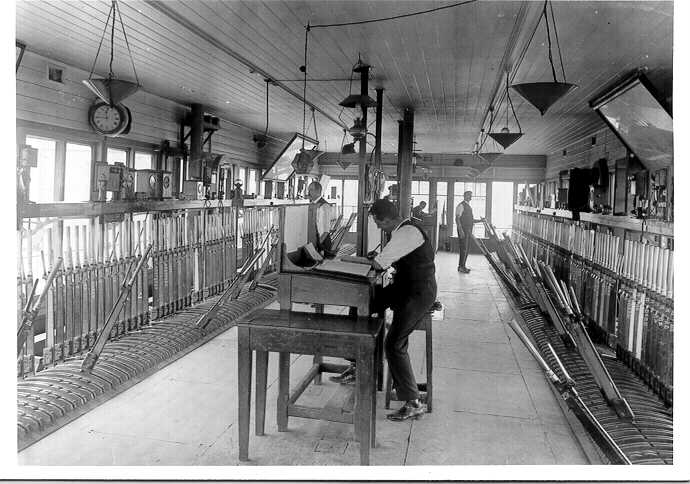
ABOVE, undated view inside Flinders Street A box.The gentleman at the desk is a Block Recorder
that was used at busier boxes, his sole task was to record all movements in the Block Register book.
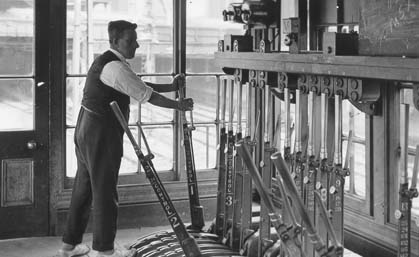
ABOVE: Flinders Street C box, undated.
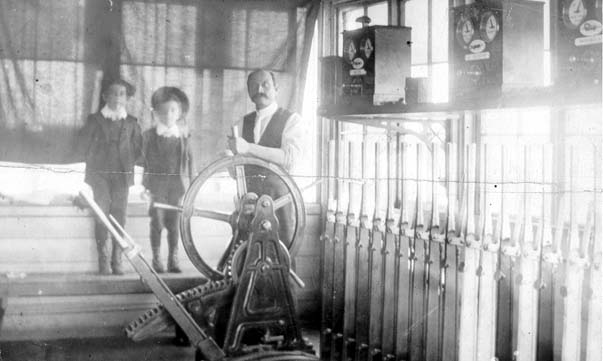
ABOVE: Undated view of Royal Park signalbox.
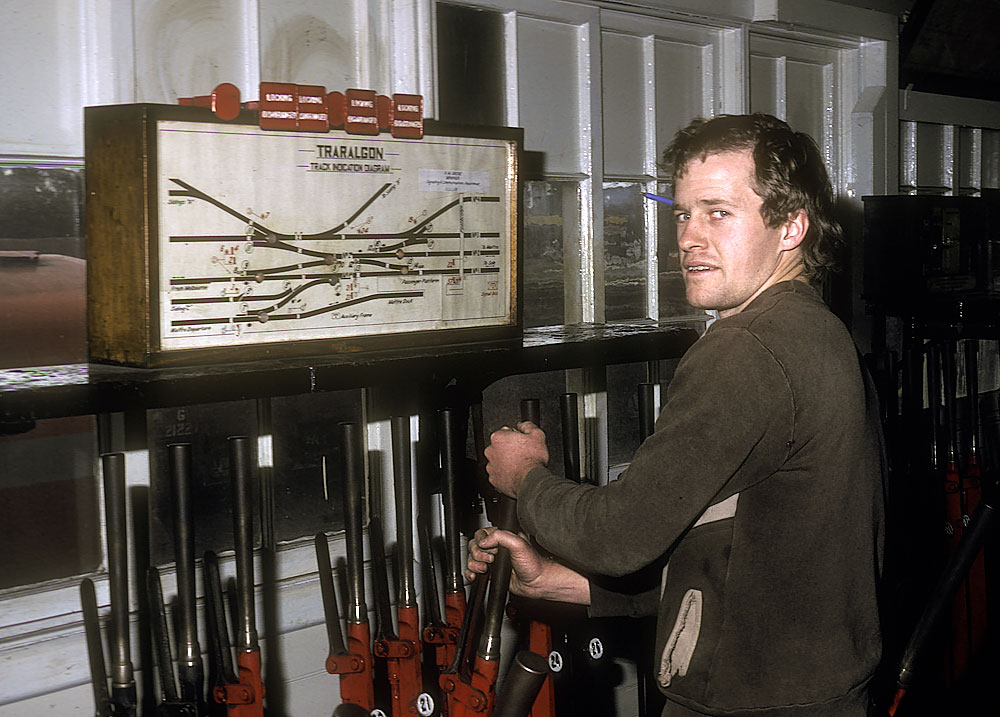
ABOVE: Signalman Dave Harvey hard at work in tne Traralgon signalbox, June 1987
Exchanging the staff
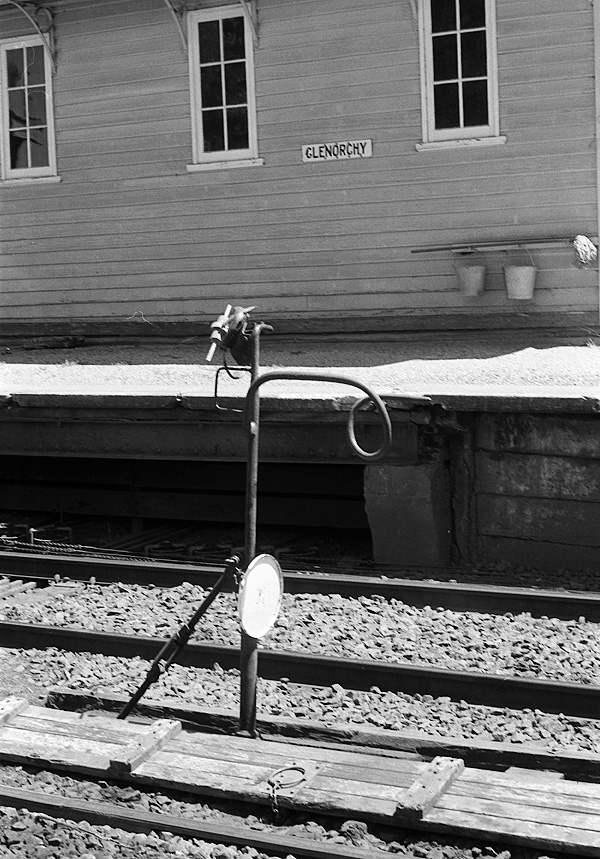
ABOVE: The up Automatic Staff Exchanger ready for use, loaded with a miniature electric staff in an "auto ring"